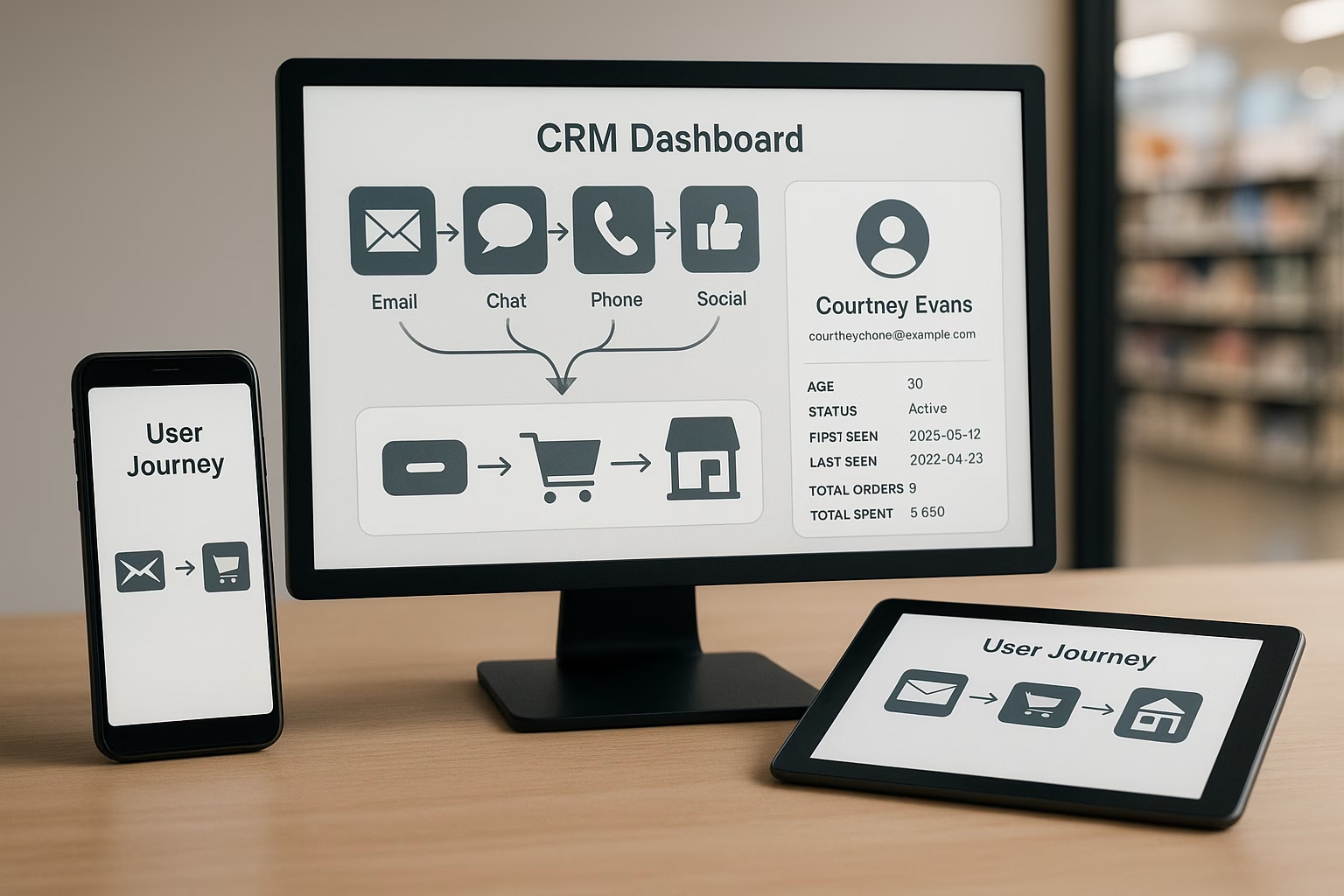If you’re still relying on broad campaigns to bring in high-value clients, you might be wasting more time and budget than you realise. The B2B buying process has shifted. Deals are longer, decisions are made by committees, and your best-fit accounts are being targeted by competitors with more tailored messaging and stronger cross-team alignment. Account-Based Marketing (ABM) gives you a way to cut through that noise by making your outreach more focused, more relevant, and more coordinated across sales and marketing. ABM is not a shiny new tactic. It is a strategic reset. And for many B2B companies, it is the difference between chasing interest and securing intent.
Forget personas. Think people.
The first shift ABM requires is a mindset change. Traditional marketing often relies on buyer personas and broad messaging. It assumes that if you get enough reach, some of it will stick. ABM turns that approach on its head. You start with real companies and real people, not segments or ICPs. You identify the accounts that matter most to your business, then build campaigns around what those buyers actually care about. That means less time crafting messages that might appeal to a general audience, and more time understanding what drives specific decision-makers. What targets are they under pressure to hit? What does success look like for their role? What objections do they already have in mind? If your marketing is not answering those questions, your competitors probably are. You can use tools like LinkedIn’s Sales Navigator (including their Account IQ AI) to get the necessary information on company priorities and challenges.
ABM is a business strategy, not a marketing format
You cannot bolt ABM onto a traditional demand generation programme and expect it to work. It is not a set of personalised emails or a collection of tailored landing pages. It is a coordinated effort across teams. Sales, marketing, customer success, and operations all have a role in identifying target accounts, understanding buying behaviour, and engaging the right people at the right time with the right message. But that level of coordination does not happen by accident. It takes planning, trust, and shared goals. It also requires a willingness to rethink what marketing success looks like. If your only KPIs are MQLs and CTRs, you are probably measuring the wrong things. ABM prioritises metrics like account engagement, pipeline contribution, deal velocity, and influence across buying groups. These are the signals that actually correlate with revenue. They are harder to fake and harder to ignore.
Personalisation alone is not enough
One of the biggest misconceptions about ABM is that it is just about personalised content. That might get you in the door, but it will not win the deal. Real ABM is about context. It is about timing your outreach to match internal decision cycles. It is about aligning your messaging with the strategic priorities your buyers already care about. And it is about building credibility across every stage of the deal, not just during the introduction.
Take a look at the way your teams are engaging accounts today. Is marketing sending out generic newsletters while sales pushes for meetings on completely different themes? Is customer success sitting on insights that never get fed back into campaign planning? These gaps create friction. ABM removes that friction by getting everyone working from the same page, literally.
The results speak for themselves
The data behind ABM is hard to ignore. According to research from Demandbase, 91% of companies using ABM report larger average deal sizes. ITSMA reports that 87% of marketers say ABM outperforms every other marketing investment. And SiriusDecisions found that organisations with aligned sales and marketing functions see up to 36% higher customer retention and 38% higher sales win rates. This is not just about better engagement. It is about more effective selling. When the entire go-to-market team is focused on the same accounts with a clear, unified strategy, you get more influence, less waste, and stronger results.
Why so many ABM pilots stall out
ABM is not hard to start. But it is hard to scale. Many teams run a pilot targeting five or ten accounts, see early success, and then try to expand the programme without the right structure in place. What often happens next is confusion. Who owns which account? What content gets created and when? How is success being tracked?
Without a clear operating model, ABM becomes inconsistent. Campaigns lose momentum. Sales stops trusting marketing. And leadership questions the investment. That is why the operational side of ABM matters just as much as the creative. You need workflows that support collaboration, tools that surface the right data at the right time, and a clear governance model for who does what. And yes, technology can help, but only if the foundation is solid.
What high-performing ABM looks like in practice
The best ABM programmes share a few traits. They start with a shared understanding of the total addressable market and an agreed process for account selection. They include structured planning sessions between sales and marketing. They build content and campaigns around the entire buying group, not just a single contact. And they invest in account insights continuously, not just at the beginning.
There is also a cultural shift. Teams stop thinking in terms of leads and begin thinking in terms of influence. They stop measuring success by volume and start measuring by progress. And perhaps most importantly, they treat ABM as a long-term strategy, not a quarterly experiment.
What about the technology?
ABM is a strategy, not a technology. But an effective ABM strategy leverages a combination of your CRM systems, marketing automation, ABM platforms, data enrichment tools, personalisation engines, advertising technology, analytics, and robust integration capabilities. These technologies work together to enable precise targeting, personalised engagement, and measurable results, ensuring your marketing and sales teams can collaborate efficiently and drive growth from high-value accounts. We can help with this, of course. Here’s an overview of Typical ABM Tech Stack Components:
| Technology Type | Purpose in ABM Strategy | Example Tools/Platforms |
|---|---|---|
| CRM System | Centralise account data, align sales & marketing | Salesforce, HubSpot, Microsoft Dynamics |
| Marketing Automation Platform | Automate campaigns, nurture leads | Marketo, HubSpot, Marketing Cloud |
| ABM Platform | Account selection, engagement, reporting | Tailor content, website, and ads |
| Data Management/Enrichment | Cleanse/enrich data, intent insights | ZoomInfo, Clearbit, Bombora |
| Personalisation/Engagement | Account selection, engagement, and reporting | Optimizely, Adobe Target |
| Ad Tech | Targeted digital advertising, retargeting | LinkedIn Ads, Google Ads |
| Analytics/Reporting | Measure performance, optimise campaigns | Google Analytics, Tableau, Power BI |
| Integration Tools | Connect stack for unified data and workflows | Zapier, MuleSoft, native integrations |
Why this matters now
B2B buyers are harder to reach than ever. More stakeholders are involved (up to a dozen, depending on deal size). More scrutiny is applied to every purchase. More noise is competing for attention. Generic messaging no longer cuts through (and it probably never has). ABM gives you a way to be relevant when and where it matters. Not louder. Not flashier. Just smarter and more focused on the deals that actually move your business forward. If your teams are spending time chasing interest that never turns into intent, it might be time to realign around the accounts that are already a good fit. That is where ABM delivers. Not with more traffic or more leads, but with more influence, more trust, and more impact.
Where Sirocco fits in
At Sirocco, we work with B2B teams that are ready to take their go-to-market strategy seriously. We help align people, processes, and platforms so your teams can move faster, target smarter, and win more consistently. Whether you are just getting started with ABM or trying to scale a pilot into something repeatable, we help bridge the gaps between strategy, execution, and outcomes. Because marketing only works when it connects to revenue. And ABM is one of the clearest ways to make that connection. Let’s book a time to discuss your option:
Meta Description:
ABM is not just marketing. It’s a strategic reset for B2B teams ready to align around the deals that matter. Here’s how to make it work.
LinkedIn Caption:
Generic messaging is easy. Influence is harder. That’s why ABM isn’t just a tactic—it’s a smarter way for B2B teams to focus on what actually drives revenue. If your sales and marketing teams are still misaligned or chasing low-fit leads, it’s time to rethink the strategy. Here’s how to build ABM that scales, engages the right buyers, and gets results.
#ABM #B2BMarketing #SiroccoGroup #GoToMarket #RevenueStrategy #SalesAlignment










